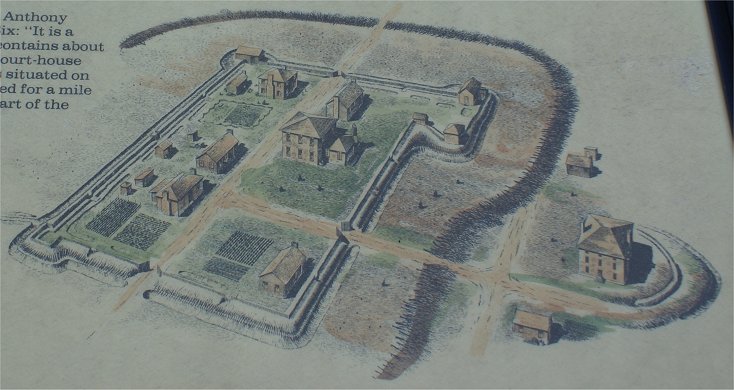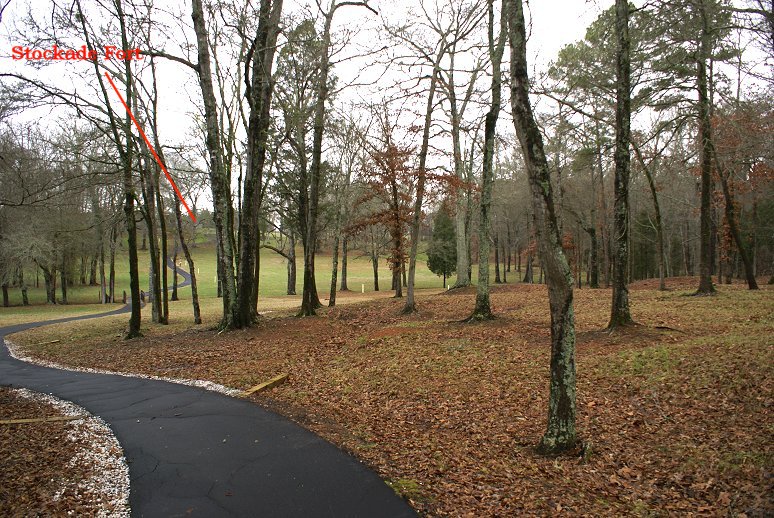
| The town of Ninety Six itself was protected by a palisade, ditch, and abatis. (See park service illustration at right.) The main obstacles to attack the town, however, were two outworks, the Star Fort, positioned to cover the town palisade, and another fort which helped protect the water supply. |  |









